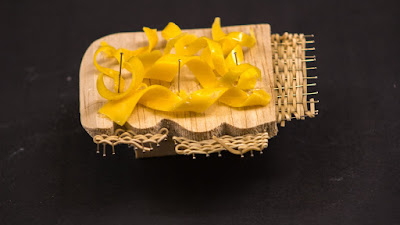


This project seeks to draw attention to the way that women are treated in the middle-east, specifically in Muslim culture. The inspiration behind this drawing is a Muslim Hijab. I chose the color black because of the colors of the traditional Muslim Hijab. I chose tulle as the overlay because though it is black and fabric, just like a traditional Hijab, it is see-through, which contradicts the main purpose of the hijab, which is to act as a curtain or partition between women and the rest of society. In the first section of my three part series, I chose to have my model pose head-on facing the camera. I photoshopped her in front of a dirty window because that is the Renaissance symbol that I chose. The dirty window represents a polluted body. This symbol also ties in with my next two photos in the series which is why the woman is considered to have a polluted body. If a women drives in a car, she can be sentenced to death by her husband or father because she has broken Muslim law and is thus polluted. While some believe that the hijab is beneficial for women in Muslim cultures to wear because it promotes modesty and purity, others believe that it is restrictive and that changes need to be made in Muslim culture to fit with modern day culture and practicality. As a woman in the United States of America, I believe that women standing up for each other to be treated equally as men is something necessary and good, but I think that there is so much more oppression of women around the world that we need to be aware of so that we can be advocates for the fair treatment of women all around the world.
In process photos:


Dimensions:
Approx. 12 in x 6 in x 12 in (at highest, deepest, and longest point)
Materials:
16 gauge galvanized raw wire
Tracing paper and gel medium
Black Spray Paint
Black Tulle








































